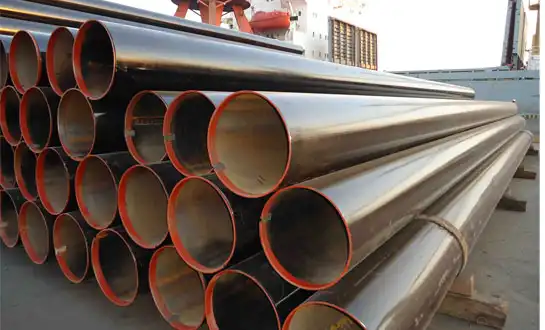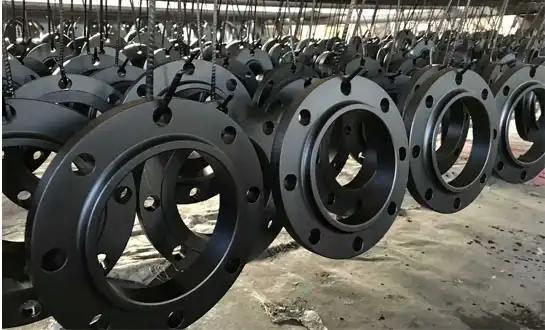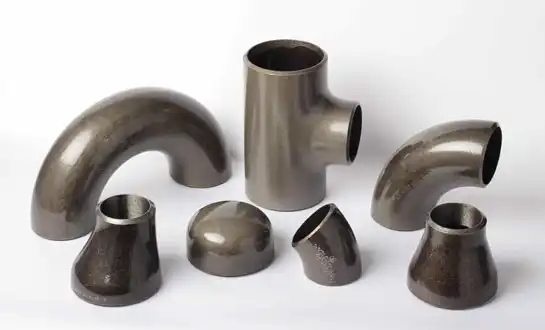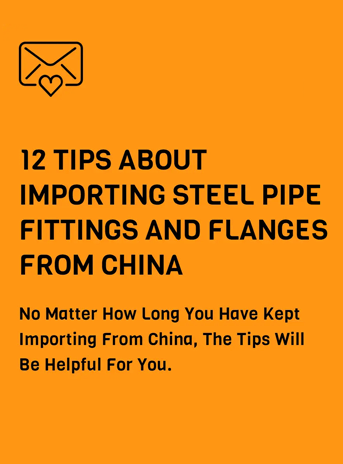Reducing Lead Time for Custom Steel Pipe Fittings: Practical Strategies
In today's fast-paced industrial world, project managers and procurement experts need to find ways to cut down on the time it takes to get bespoke steel pipe fittings. Long wait times may push back whole construction plans, raise holding costs, and throw off carefully planned operating timeframes. By knowing what affects production cycles and putting in place focused tactics, you may greatly shorten delivery times without lowering quality requirements. There are helpful ways for buyers and sellers to work together to speed up the whole process of making steel pipe fittings, from the first set of specs to the final delivery. When things get tough, these methods help projects stay on track and still meet the needs for safety and success.
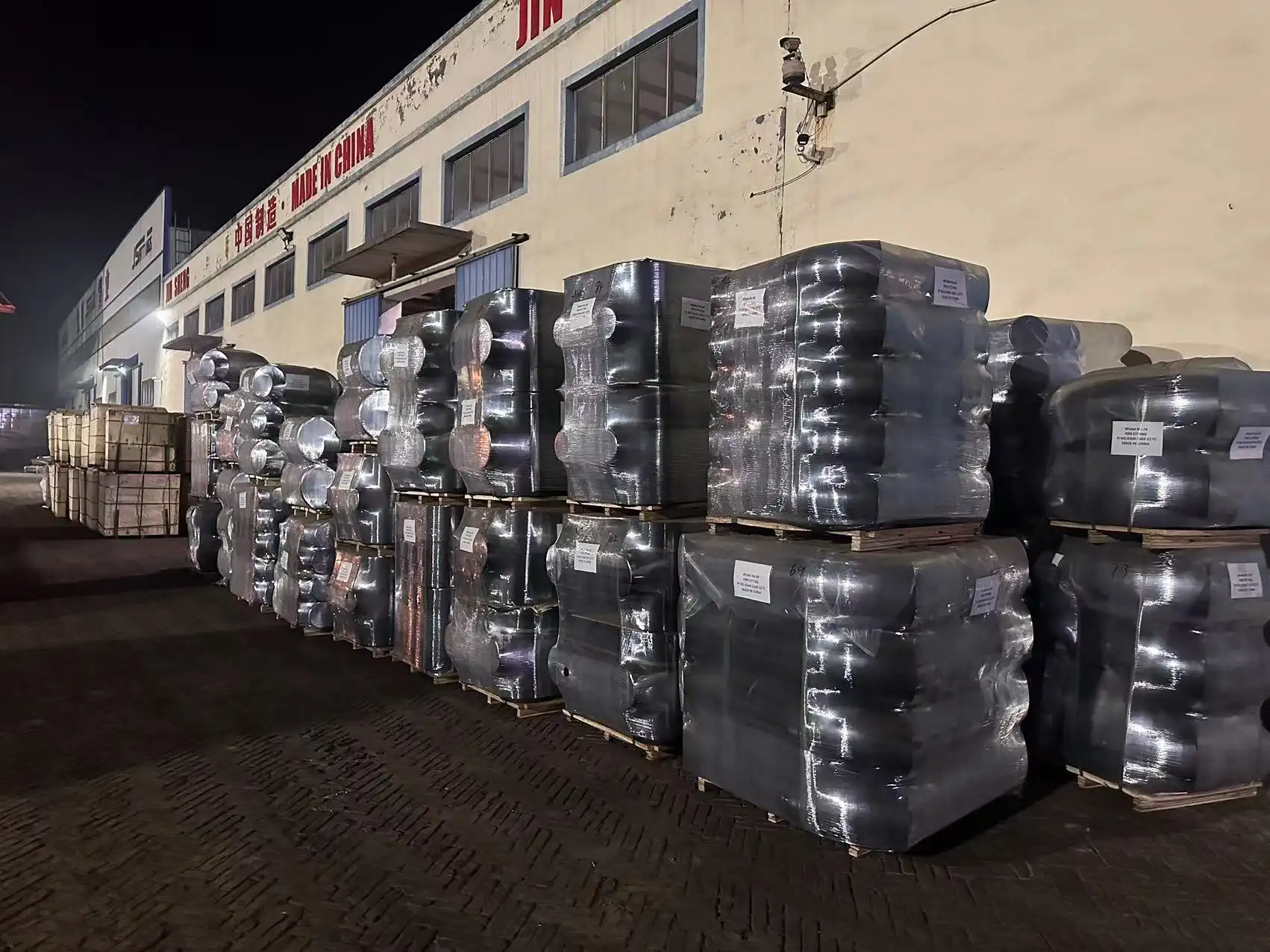
Understanding the Production Cycle for Custom Steel Pipe Fittings
Material Procurement and Inventory Management
The foundation of reduced lead times begins with strategic material procurement practices. Manufacturers who have good ties with steel mills and suppliers of raw materials might get priority allocation during times of strong demand, which keeps their production schedules running smoothly. Forward-thinking companies implement just-in-time inventory systems balanced with safety stock levels for commonly requested specifications. Analytics help smart sellers guess how demand will change by looking at past orders, building trends during certain times of the year, and economic factors. This lets them have supplies ready before orders come in. The quality of raw materials directly impacts subsequent processing efficiency; premium-grade steel with consistent chemical composition requires fewer adjustments during forming and heat treatment stages. Establishing preferred supplier agreements with certified mills that comply with international standards such as ASTM, DIN, and JIS ensures material traceability and reduces inspection time. Companies that invest in automated inventory management systems can instantly verify material availability, generate accurate quotations, and commit to realistic delivery schedules for steel pipe fittings.
Manufacturing Capacity and Workflow Optimization
Production efficiency depends heavily on manufacturing capacity utilization and workflow design. Facilities equipped with modern CNC machinery, automated welding systems, and computer-controlled heat treatment furnaces can process custom orders with remarkable speed and precision. Lean manufacturing principles, including cellular production layouts and single-piece flow concepts, minimize work-in-process inventory and reduce the time components spend waiting between operations. People can get more jobs and get around more quickly if they know how to use more than one type of tool. Advanced manufacturers use enterprise resource planning systems that let them see the state of production in real time. This lets them change schedules on the fly to put urgent orders at the front of the list. Investing in quick-change tooling solutions makes it easy to switch between various fitting sizes and configurations quickly, cutting setup time from hours to minutes. These changes to the way things work together shorten the time it takes to make steel pipe fittings while keeping the quality of the surface finish and the precision of the dimensions.
Quality Control and Testing Protocols
Streamlined quality assurance processes contribute significantly to lead time reduction without compromising product integrity. Modern inspection technologies, including automated ultrasonic testing, digital radiography, and three-dimensional scanning systems, can evaluate steel pipe fittings far more rapidly than traditional manual methods. Implementing in-process inspection at critical manufacturing stages identifies potential issues before significant value-added work occurs. Companies that achieve ISO 9001:2015 certification demonstrate process maturity that translates into predictable, repeatable production outcomes. Pre-qualified manufacturing processes for standard configurations eliminate the need for first-article inspection on repeat orders, allowing immediate production commencement. Documentation automation systems generate material test reports and compliance declarations simultaneously with production completion, ensuring that shipping delays due to paperwork preparation become non-existent.
Collaborative Strategies Between Buyers and Suppliers
Early Engineering Engagement and Design Standardization
Proactive collaboration during the design phase represents one of the most effective strategies for reducing lead time. When procurement teams work with suppliers throughout the engineering stage, manufacturers may provide them useful feedback on design-for-manufacturability concepts that make manufacturing easier. Standardizing connection types, wall thicknesses, and dimensional standards throughout a project cuts down on the number of tools needed, which means longer production runs with fewer changeovers. Establishing frame agreements or blanket purchase orders for anticipated requirements enables suppliers to allocate production capacity and pre-position materials before specific release orders arrive. Suppliers can recommend alternative steel grades or manufacturing methods that achieve equivalent performance with shorter production cycles. Digital collaboration tools ensure all parties work from identical, current information, preventing delays associated with drawing revisions. By building a strong connection with the seller, you can easily get steel pipe parts from them.
Transparent Communication and Realistic Scheduling
Communication quality directly impacts lead time management. When you make your delivery needs explicit, providers can give each order the right amount of attention and resources. When buyers let manufacturers know about prospective projects ahead of time, manufacturers can plan how to allocate capacity and arrange how to get materials. Regular status updates throughout the production cycle keep procurement teams informed of progress and provide early warning of potential delays. Honest assessment of manufacturing capabilities and realistic lead time quotations build trust and prevent disruption caused by missed commitments. When both parties approach scheduling discussions with transparency and mutual respect, they can identify creative solutions such as phased deliveries or partial shipments that keep projects moving forward while custom steel pipe fittings complete their production cycle.
Performance Metrics and Continuous Improvement
Setting quantifiable performance indicators makes people responsible and pushes them to keep getting better. The on-time delivery rate is a simple way to measure how reliable a provider is. Order cycle time reveals opportunities for process improvements throughout the manufacturing sequence. Conducting periodic business reviews that examine these metrics jointly allows buyers and suppliers to identify trends and collaboratively address persistent challenges. Suppliers who demonstrate consistent performance improvement earn preferred status and increased order allocation. Cutting down on wait time becomes a real, measurable goal with this data-driven way.
Technology and Process Innovations
Digital Manufacturing and Automation
Technological advancement continues to reshape the production landscape for steel pipe fittings. Computer-aided manufacturing systems translate engineering models directly into machine instructions, eliminating manual programming time. Robotic material handling systems keep the flow of work going between processing stations, which makes the most of the equipment. Automated welding cells equipped with adaptive control systems produce consistent quality at speeds far exceeding manual welding. Vision inspection systems integrated directly into production lines provide immediate feedback on dimensional accuracy. Cloud-based manufacturing execution systems coordinate activities across multiple production facilities, enabling load balancing that directs orders to locations with available capacity. These technological advances completely change what wait times are possible for custom steel pipe fittings.
Supply Chain Integration and Logistics Optimization
Modern supply chain management extends beyond the factory floor. Vendor-managed inventory programs automatically trigger replenishment orders when predetermined minimum levels are reached, effectively reducing lead time to zero for routine requirements. Strategic warehouse locations near major industrial centers enable rapid distribution to project sites. Advanced transportation management systems optimize carrier selection and routing based on cost, transit time, and reliability metrics. International suppliers who establish regional distribution facilities can serve global markets with domestic-equivalent lead times. Tracking shipments in real time lets you see what's going on with the delivery.These supply chain innovations recognize that manufacturing efficiency alone cannot achieve optimal lead times for steel pipe fittings without corresponding excellence in logistics.
Modular Design and Prefabrication Approaches
Rethinking traditional construction sequencing through modular design and prefabrication strategies can dramatically reduce on-site installation time. Factory-assembled piping modules that integrate multiple steel pipe fittings into complete subsystems allow parallel manufacturing activities. Prefabrication in controlled factory environments yields superior quality compared to field assembly. Suppliers who offer value-added services such as cutting, threading, or coating application deliver installation-ready components that eliminate secondary operations. The usual way of making things is changed by these methods, which move hard work that needs to be done outside to controlled factory settings.
Conclusion
Want to make steel pipe fittings at home faster? Plan ahead for how to get tools, work with others, get things done faster, and do better work. For success, all sides need to be committed to open communication, realistic scheduling, and making things better all the time.
HEBEI RAYOUNG PIPELINE: Your Trusted Steel Pipe Fittings Manufacturer
At HEBEI RAYOUNG PIPELINE TECHNOLOGY CO., LTD., we understand that your project timelines are critical to success. So that we can give you steel pipe fittings when you need them, we've spent a lot of money on high-tech tools and quick process. Our diverse product range includes buttweld elbows, tees, reducers, and flanges manufactured to exacting standards, supported by GOST-R, SGS, and ISO 9001:2015 certifications. We keep a planned inventory of materials, use flexible production techniques, and make sure that all orders have clear communication. Whether your application involves water systems, gas lines, or industrial plants, our steel pipe fittings deliver the performance and durability your projects demand.Contact our experienced team at info@hb-steel.com to discuss how we can support your requirements.
References
1. Anderson, M. & Thompson, R. (2023). Supply Chain Optimization in Industrial Manufacturing: Strategies for Lead Time Reduction. Journal of Operations Management, 45(3), 278-294.
2. Chen, L., Williams, K., & Roberts, D. (2024). Advanced Manufacturing Technologies in Pipe Fitting Production: A Comprehensive Review. International Journal of Industrial Engineering, 31(2), 156-173.
3. Davidson, P. (2023). Collaborative Procurement Strategies for Construction Projects. Construction Management Quarterly, 28(4), 412-428.
4. Foster, J. & Martinez, S. (2024). Quality Control Automation in Steel Product Manufacturing. Metallurgical Process Engineering, 19(1), 89-107.
5. Kumar, R., Singh, A., & Patel, N. (2023). Lean Manufacturing Implementation in Custom Metal Fabrication Industries. Production Planning and Control Review, 34(6), 523-541.
6. Wilson, T. & Brown, H. (2024). Digital Transformation in Industrial Supply Chains: Case Studies and Best Practices. Supply Chain Innovation Journal, 12(2), 201-219.

Need a quote? Want to see samples? Just say hello. We’re friendly. We’re fast. And we’re ready when you are.
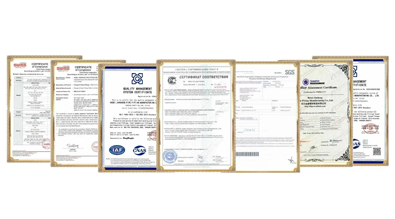
Welcome to RAYOUNG – Strong Pipes, Stronger Promise
